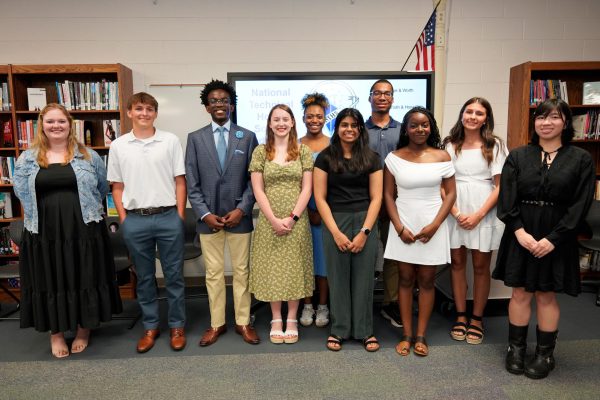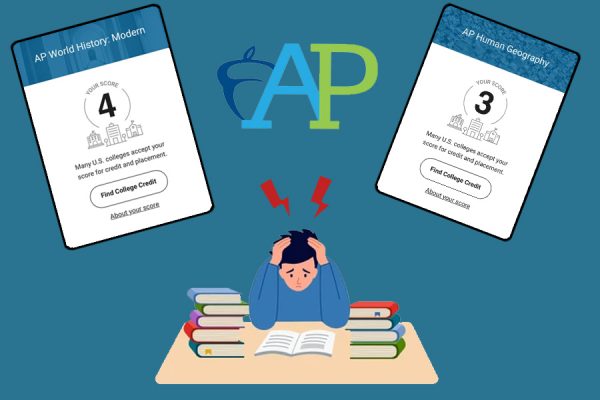2020 Mock Election: The students have spoken
Elections are the foundation of democracy in America. Every official in the United States government is either elected by the people, or appointed by someone who is currently in office. With controversy surrounding the nation, the 2020 presidential election appears to be the most pivotal in our history. Citizens seem more eager now than ever to make their voices heard. There has already been a noticeable increase in the early voting turnouts as 65% of the eligible voting population has already voted, which could be the highest amount of voter participation in the century. Compared to 2016, there has already been a 10% increase seen in voting, and it is only expected to continue rising.
This year, the Zephyr staff sponsored a mock election virtually due to the pandemic. In 2016, the ballots were on paper, and there was a greater voter turnout. More students selected “prefer not to choose” this election, compared to 2016. It is uncertain whether the 13.3% of students who chose not to vote are undecided, not interested in voting or afraid that someone would see and share their choice. Some parents and students expressed fear that their answers would be held against them or published, but the online student mock election was completely confidential. No teacher or newspaper staff member could access individual results.
North Carolina is considered a battleground state, or a swing state, which means that the state could be won by either the Democratic or the Republican party, and is usually targeted by both parties to try and win over votes. In 2016, Trump won North Carolina. According to The Economist, North Carolina is predicted to be taken by Joe Biden and Kamala D. Harris, with about 66% of votes.
In the 2016 mock election, the Zephyr received 1,842 student votes, which is 808 more votes than they received this year. In 2016, 39.5% of votes were for Hillary Clinton, 34.9% of votes were for Donald J. Trump, 13.8% of votes were for Gary Johnson, and 12.4% of students wrote in their own candidate. The actual North Carolina results in 2016 were 49.8% votes for Donald J. Trump, 46.2% of votes were for Hillary Clinton, 2.7% of votes were for Gary Johnson and 1.3% of votes were for others. Nationally, there was only a 55% turnout for voters, which means that 45% of United States citizens who were eligible to vote didn’t go to the polls to exercise their right to vote. Of those 55% who voted, 48.2% of their votes were for Hillary Clinton and 46.1% of their votes were for Donald J. Trump. In the 2020 student mock election, 55.6% of votes were for Joseph R. Biden, 29.3% of votes were for Donald J. Trump, 1.5% of votes were for Jo Jergensen, 0.4% of votes were for Don Blankenship and 13.3% of students chose “prefer not to answer.” Only 44% of students enrolled in West voted this year.
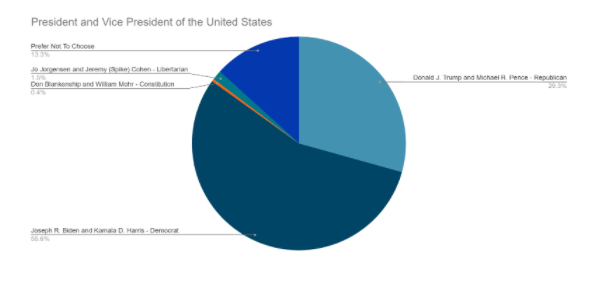
The chart above shows the 2020 student mock election results for the President and the Vice President of the United States candidates. The majority of votes, 55.6%, were for former Vice President Joseph R. Biden and Kamala D. Harris (Democrat).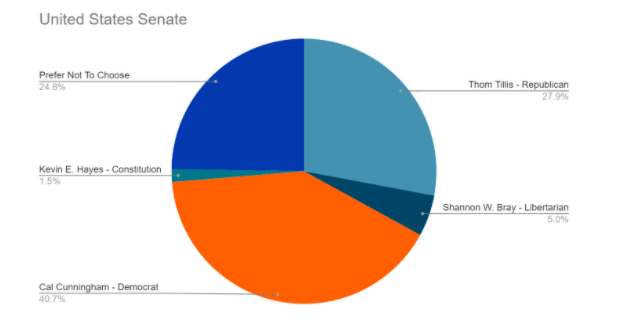
The chart above shows the 2020 student mock election results for the United States Senate, with the majority of student votes, 40.7%, for Cal Cunningham (Democrat).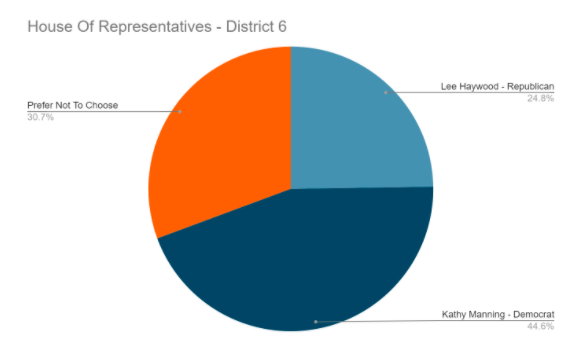
The chart above shows the 2020 student mock election results for the House of Representatives for District 6. The majority of student votes, 44.6%, were for Kathy Manning (Democrat).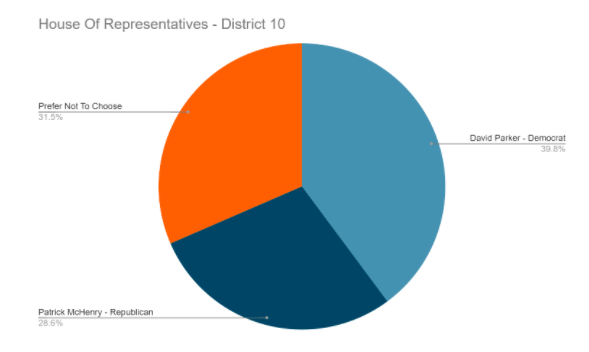
The chart above shows the 2020 student mock election votes for the House of Representatives for District 10. The majority of student votes, 39.8%, were for David Parker (Democrat).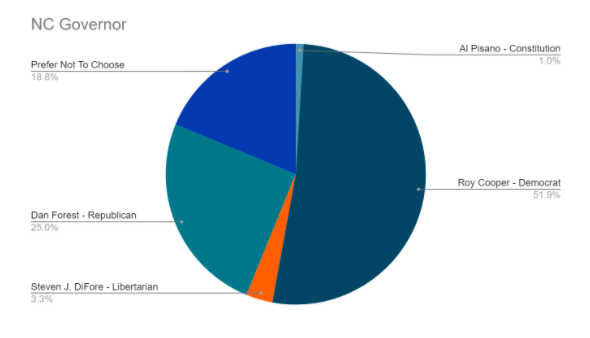
The chart above shows the 2020 student mock election results for North Carolina Governor, with majority of student votes, 51.9%, for Roy Cooper (Democrat).
If you have any questions about where to vote, you can find your location at https://www.ncsbe.gov/voting/vote-person-election-day.

Meredith Watson is a senior news writer joining the staff for the 2020-2021 school year. She enjoys hanging out with her friends, traveling, and taking...





